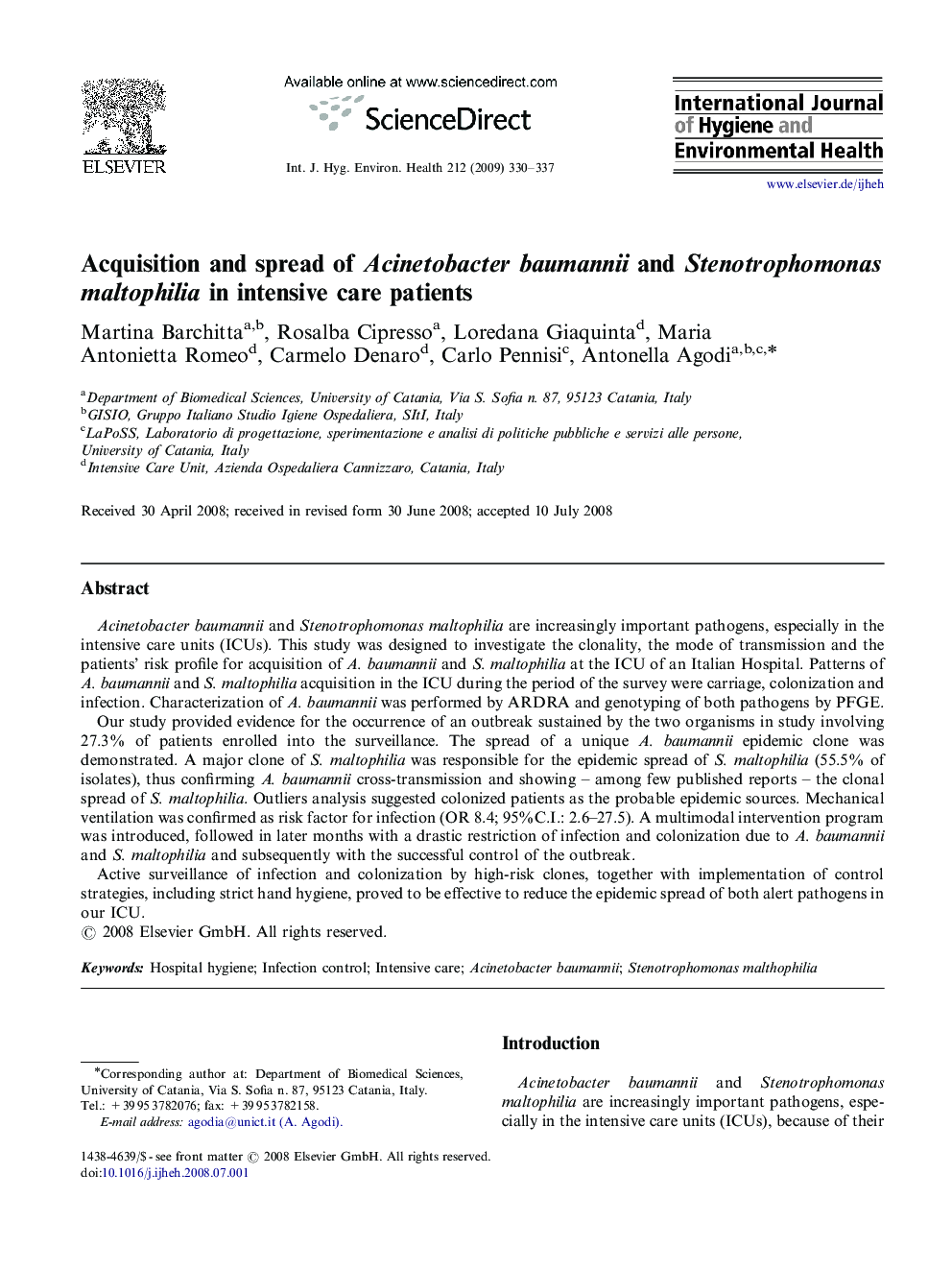| Article ID | Journal | Published Year | Pages | File Type |
|---|---|---|---|---|
| 2588858 | International Journal of Hygiene and Environmental Health | 2009 | 8 Pages |
Acinetobacter baumannii and Stenotrophomonas maltophilia are increasingly important pathogens, especially in the intensive care units (ICUs). This study was designed to investigate the clonality, the mode of transmission and the patients’ risk profile for acquisition of A. baumannii and S. maltophilia at the ICU of an Italian Hospital. Patterns of A. baumannii and S. maltophilia acquisition in the ICU during the period of the survey were carriage, colonization and infection. Characterization of A. baumannii was performed by ARDRA and genotyping of both pathogens by PFGE.Our study provided evidence for the occurrence of an outbreak sustained by the two organisms in study involving 27.3% of patients enrolled into the surveillance. The spread of a unique A. baumannii epidemic clone was demonstrated. A major clone of S. maltophilia was responsible for the epidemic spread of S. maltophilia (55.5% of isolates), thus confirming A. baumannii cross-transmission and showing – among few published reports – the clonal spread of S. maltophilia. Outliers analysis suggested colonized patients as the probable epidemic sources. Mechanical ventilation was confirmed as risk factor for infection (OR 8.4; 95%C.I.: 2.6–27.5). A multimodal intervention program was introduced, followed in later months with a drastic restriction of infection and colonization due to A. baumannii and S. maltophilia and subsequently with the successful control of the outbreak.Active surveillance of infection and colonization by high-risk clones, together with implementation of control strategies, including strict hand hygiene, proved to be effective to reduce the epidemic spread of both alert pathogens in our ICU.
